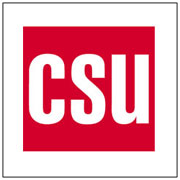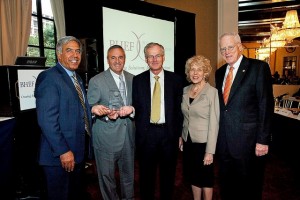
Governor's May Revision Avoids Direct Cuts to CSU
System outlines options dependent on Governor’s tax measure
Media Contacts: Claudia Keith or Mike Uhlenkamp, (562) 951-4800
(July 16, 2012) – With the state budget for 2012-13 now signed, the California State University Board of Trustees will discuss budget options for the system at its regularly scheduled board meeting tomorrow. The final budget relies on the successful passage of the Governor’s tax measure in November. University officials will lay out the difficult budget choices if voters don’t approve the measure and the CSU faces an additional $250 million mid-year “trigger” cut. Options include strategies to reduce payroll costs, a “triggered” mid-year tuition fee increase, enrollment reductions, and other ideas will all be part of the contingencies considered. View the CSU Budget Central website, the SJSU Budget Central website, or current SJSU tuition and campus fees.
“These are all difficult challenges and choices that the CSU must consider to address our severe budget situation,” said Robert Turnage, assistant vice chancellor for budget.
Facing a nearly $16 billion deficit, the state budget adopted by the legislature and the Governor keeps the CSU’s budget essentially flat. However, should the Governor’s tax measure fail, the CSU will face an additional $250 million mid-year “trigger” cut. In that event, the system will have lost almost $1.2 billion or 39% of its state support since 2007-08.
Over the past several months, the CSU has been meeting and holding consultative discussions with its stakeholders to gather input and feedback on budget options. While the board will consider strategies to address the budget problem at its July meeting, it isn’t expected to make final decisions on a contingency budget plan until it meets in September.
Ongoing Budget Deficit
As a result of drastic state budget cuts and increases in mandatory costs such as employee health care premiums, the CSU has a funding gap of approximately $510 million. This is despite increases in tuition fee revenue of $593 million that have only partially filled the hole created by more than $1 billion in state funding reductions.
In addition, the budget just approved has an option for a delayed tuition buy out that appropriates $125 million in next year’s budget, but only if the Governor’s tax measure passes and if the CSU board rolls back the tuition increase already in effect for fall 2012. The CSU had expected to receive $132 million of net revenue from the tuition increase for this fiscal year, and the 23 campuses have already built their budgets and planned course schedules based on this revenue. The system is working to identify a solution to replace the lost revenue for the current fiscal year.
Although the campuses and the Chancellor’s Office have implemented numerous cost reduction actions – including furloughs and a workforce reduction of more than 3,000 employees – a large portion of the funding gap has been covered by one-time resources and deferrals.
“We are at the point where the use of one-time funds to address ongoing budget cuts is not sustainable,” said CSU Executive Vice Chancellor and Chief Financial Officer Benjamin Quillian. “It is not possible to continue to patch over budget holes. We need to take actions that reduce our costs going forward. That is the only way we will be able to serve students with the classes and support services that they need.”
Staff will present two alternative strategies to address a potential $250 million mid-year “trigger” cut with both options sharing components including reducing salaries or increasing employees’ share of benefit costs; reducing faculty assigned time and sabbaticals; charging for excess units, and the use of continuing education funds and other one-time resources. One option preserves access by not cutting enrollment while the other relies on larger payroll reductions by maintaining tuition fee levels.
“Trigger on trigger”
Under this option, the board would authorize at its September meeting a contingency mid-year tuition fee increase of $150 per semester or about 5% that would be “triggered” if the CSU faces a $250 million cut if the tax initiative fails. There would be no incremental set aside for financial aid since that would require a larger increase to generate the same net revenue, and would result in a larger burden for students without significant financial aid. The CSU already provides almost $700 million in tuition subsidies for students with the greatest financial need. There would also be no further enrollment reductions under this approach.
Employee pay/benefit reductions
Since 85% of CSU’s budget is personnel related, reductions in employee pay or increases in the amount employees pay for benefits will need to be considered. Options include systemwide reductions in personnel costs that could be achieved through negotiated reductions in employee salaries, or alternatively, through greater cost-sharing of health benefit premiums.
Reduce enrollment/reduce faculty and staff positions
If the CSU’s budget is cut an additional $250 million and no new tuition fee increase is implemented, the CSU would need to reduce 2013-14 enrollment by 6,000 students, and eliminate the associated 750 faculty/staff positions.
Faculty Assigned Time and Sabbaticals
Campuses have reduced assigned time, but further prioritization of non-teaching activities could result in savings of up to $25 million.
Third Level Pricing Structure
All of the new pricing strategies would provide more room for incoming students, help students progress to degree, and ensure that diminishing state resources are used to effectively serve as many students as possible.
Specifics include:
- Charging for the full cost of any units over 16 per semester
- Charging a “course repeat” fee for any single class taken by a student more than once
- Implementing a graduation incentive fee for “super seniors” who have already taken five years worth of academic credit funded by the state
- Increase tuition supplement for nonresident students by $1,000
One Time Transfer of Continuing Education Reserves
Both approaches include a transfer of approximately $75 million from CSU’s Continuing Education Revenue Fund. This would provide significant relief to the “state side” of the university for 2012-13 but would be one-time and restricted to that fiscal year.
The board will also take action on a resolution to endorse the Governor’s tax measure.
###
About the California State University
The California State University is the largest system of senior higher education in the country, with 23 campuses, approximately 427,000 students and 44,000 faculty and staff. The CSU awards about 99,000 degrees annually and since its creation in 1961 has conferred nearly 2.6 million. The CSU is renowned for the quality of its teaching and for the job-ready graduates it produces. The mission of the CSU is to provide high-quality, affordable education to meet the ever changing needs of the people of California. With its commitment to excellence, diversity and innovation, the CSU is the university system that is working for California. Connect with and learn more about the CSU at CSU Social Media. Show how the CSU matters to you and take action.

